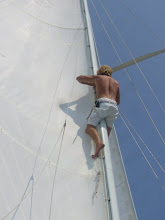The Arctic region can be defined in a number of ways. To geographers, it is the area north of 66° 33′ 39″ North. For others, it is a region defined by average temperatures or the presence of continuous or discontinuous permafrost. For the purposes of this blog, we will consider the Arctic to be the region defined by Professor Donat Pharand: all land north of 60° North latitude as well as areas to the south of 60° North that encompass tundra biomes inhabited primarily by Native people, as in northern Quebec. Fairbanks and Anchorage do not, however, fall under this definition despite being more northerly than 60° North.
Just how big is the Arctic? According to the Arctic Council, an intergovernmental panel on Arctic issues, the Arctic covers thirty million square kilometers, encompassing one-sixth of the world's landmass and twenty-four time zones. For comparison, the entire North American continent covers approximately twenty-four million square kilometers. Continental Russia, China and India could all three fit into the region with room to spare. At the height of the winter ice season, an ice pack of sixteen million square kilometers - nearly the size of Russia - covers the region.
Change in the Arctic is occurring at a breakneck pace. On August 21, 2007, the fabled Northwest Passage - a sea route through the waters north of Canada that cuts thousands of miles off the journey from Western Europe to Asia - opened for the first time to vessels without an icebreaker. The following year, the ice pack again receded to a significant enough extent that the passage opened on August 25, 2008. The Northern Sea Route, which follows the Russian Arctic border to Europe, is likewise increasingly ice-free. A growing fleet of Russian icebreakers further enables shipping in the Northern Sea Route.
In short, the Arctic is caught in a self-reinforcing feedback loop. As more ice melts, the dark surface of the ocean and the permafrost are exposed to a greater extent during the summer months. These dark surfaces trap and retain heat just as the ice pack once reflected it. Indeed, scientific data shows that the Arctic is warming faster than the rest of the globe. A new study in the journal Ecological Monographs indicates that the Arctic has historically absorbed between ten and fifteen percent - and as high as twenty-five percent - of the human-generated carbon dioxide absorbed by land masses and oceans. Low temperatures allow the permafrost to absorb more carbon dioxide than it emits. As the region warms and the permafrost is exposed, large deposits of greenhouse gases such as methane and carbon dioxide will be released into the atmosphere. This is unaccounted for by current climate models.
In the coming decades, the Far North will find its way into our headlines more often. Already, Russia has declared that it expects the Arctic to be its main resource base by 2020. The eight Arctic nations - Russia, Canada, the United States, Denmark, Norway, Sweden, Finland and Iceland - as well as commercial interests (shippers, deep-sea miners, hydrocarbon coporations, the fishing industry), local populations, environmental, preservation and conservation groups will all bring a different opinion to the table. It will take a coordinated effort, though, to implement regulatory systems and the appropriate enforcing mechanisms to protect Arctic ecosystems and social systems without overly burdening economic development in the region. And there will be economic development: the 2007 U.S. Geological Survey estimates that 22% of the world's undiscovered, technically recoverable resources are located in the Arctic, with 84% of these resources located offshore. Even conservative estimates place the amount of methane hydrates in the region at one or more magnitudes larger than the conventional reserves cited by the U.S. Geological Survey. With increasing global demand for natural resources, the competition for Arctic reserves is heating up.




No comments:
Post a Comment